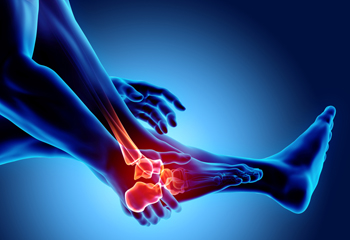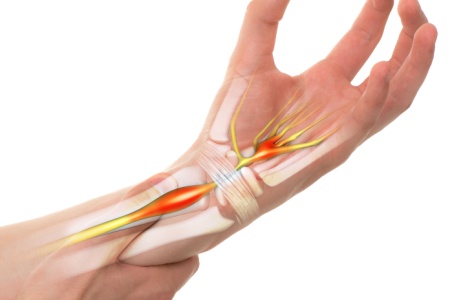Blog
Items filtered by date: June 2025
Supporting a Healthy Pregnancy with Chiropractic Care

Pregnancy brings many physical changes that can lead to discomfort, especially in the lower back, hips, and pelvis. Chiropractic care during pregnancy helps support the body through these changes by maintaining proper alignment and balance. As the baby grows and the body adapts, added pressure on the spine and joints can cause pain and mobility issues. Gentle chiropractic adjustments can relieve this pressure, reduce nerve irritation, and promote overall comfort. Care during pregnancy may also help improve posture and prepare the pelvis for a smoother delivery. Chiropractic care is safe for both mother and baby when performed by trained professionals. It offers a natural way to manage pregnancy-related discomfort, supports optimal fetal positioning, and contributes to a more comfortable and healthy pregnancy experience. If you are experiencing discomfort during your pregnancy, it is suggested that you visit a chiropractor who can offer effective relief solutions.
Pregnancy is a transformative experience, but the physical changes can bring challenges like low back pain, leg pain, and sciatica. These discomforts often result from the extra weight and shifts in the body’s center of gravity, placing stress on the spine and pelvis.
Chiropractic care provides a gentle, non-invasive approach to managing these symptoms. Specialized techniques for pregnant individuals help realign the spine and reduce pressure on the nerves, addressing sciatica and related leg pain. Adjustments also promote proper pelvic alignment, potentially easing tension and enhancing mobility.
Beyond pain relief, chiropractic care supports overall wellness, improving posture and helping the body prepare for childbirth. Many find that regular visits reduce discomfort and improve quality of life throughout pregnancy.
1. Is it safe to see a chiropractor in the first trimester?
Absolutely. Prenatally-trained chiropractors use gentle, specific techniques suitable for every stage of pregnancy, including the first trimester.
2. Can chiropractic adjustments reduce swelling in my feet and ankles?
While chiropractic care does not directly treat swelling, improving circulation through spinal alignment can support your body’s natural fluid drainage, potentially easing swelling.
For additional information, please contact our office located in Orinda, CA .
See Us for Back Pain Solutions
Chiropractic Support for Those Living with Rheumatoid Arthritis

Rheumatoid arthritis is an autoimmune condition that affects the joints, often causing pain, swelling, and stiffness. Chiropractic care may help manage symptoms by improving joint movement and reducing muscle tension. Gentle spinal adjustments, stretching, and soft tissue therapies can support flexibility and comfort without placing unnecessary stress on inflamed areas. However, certain techniques should be avoided. High-force adjustments on severely affected joints may increase discomfort or the risk of injury. A careful evaluation is essential before beginning care. Chiropractors familiar with autoimmune conditions will adapt their approach based on your stage of inflammation and overall health. Open communication between other medical professionals on your team and a chiropractor ensures safe, coordinated care. If you are navigating the challenges of this condition and wish to explore gentle, supportive therapies, it is suggested that you speak with a chiropractor experienced in treating patients with complex joint conditions.
Joint Stiffness
Chiropractic care is a natural, non-invasive option for managing joint stiffness. Whether it is caused by arthritis, injury, or repetitive strain, joint pain can greatly impact daily life, limiting mobility and causing discomfort. Chiropractors focus on relieving joint pain by addressing alignment and functional movement in the affected areas, helping to restore comfort and flexibility.
Alleviating Joint Stiffness
When treating joint stiffness, chiropractors use a combination of gentle adjustments, soft tissue therapy, and mobilization techniques to reduce inflammation, ease stiffness, and promote better joint function. By aligning the body properly, chiropractic care can reduce the pressure on joints, allowing them to move more freely and reducing wear and tear over time.
In addition to adjustments, chiropractors often guide patients in targeted exercises to strengthen muscles surrounding the joints. These exercises, tailored to each individual, help improve joint stability and reduce the likelihood of future pain. Chiropractors may also provide lifestyle recommendations, such as ergonomic adjustments or nutrition tips, to support joint health and promote healing.
Why Consider Chiropractic for Joint Stiffness?
Chiropractic care addresses the underlying causes of joint stiffness, offering relief and improved quality of life. With regular care, patients often experience increased mobility, reduced pain, and a healthier, more active lifestyle.
Can Chiropractic Care Prevent Future Joint Stiffness?
Regular chiropractic care supports alignment, which helps prevent strain and reduces the likelihood of future joint stiffness.
If you have any questions, please feel free to contact our office located in Orinda, CA .
Chiropractic Help for Young Athletes With Chronic Ankle Pain

Chronic ankle pain can interfere with a young athlete’s ability to play, practice, and perform. Whether caused by repeated sprains, joint instability, or misalignment in the ankle or foot, ongoing discomfort may affect balance, posture, and overall movement. Chiropractic care offers a non-invasive approach to diagnosing and managing this kind of pain. A chiropractor can assess joint function, identify areas of restriction, and use gentle adjustments to improve ankle alignment and mobility. Soft tissue therapies and guided rehabilitation exercises may also be introduced to restore strength and prevent reinjury. By addressing not only the symptoms but also the underlying cause, chiropractic care supports long-term ankle stability and function. If your young athlete is experiencing lasting ankle pain that has not resolved with rest alone, it is suggested that you seek chiropractic care to help restore comfort and keep them active.
Ankle pain is a common problem that can significantly disrupt daily life, often stemming from injuries, overuse, or underlying conditions like arthritis. Sprains, where ligaments are overstretched or torn, are among the most frequent causes, leading to swelling, stiffness, and difficulty bearing weight. Overuse injuries such as tendonitis, caused by repetitive strain, can create persistent discomfort, while misalignment in the joint or biomechanical imbalances in the foot or leg may contribute to chronic pain.
If left untreated, these issues can lead to improper healing, reduced mobility, and a higher risk of re-injury.
Addressing the underlying cause is critical for restoring function and preventing long-term complications. Chiropractic care offers a natural approach to managing ankle pain, focusing on improving alignment, mobility, and overall function while supporting recovery through targeted therapies and exercises.
1. Will chiropractic treatment for ankle pain hurt?
Chiropractic treatments are designed to be gentle and tailored to each patient's comfort level. Adjustments and therapies are performed carefully to avoid causing pain, even in sensitive or swollen areas. Most patients report feeling relief and improved mobility after treatment, although some individuals may experience mild soreness, similar to the feeling after a workout, as the body adjusts.
2. How long does it take to see results from chiropractic care for ankle pain?
The timeline for improvement varies depending on the severity and cause of the pain. Some patients experience relief after just a few sessions, while chronic or complex cases may take longer to resolve.
If you have any questions, please feel free to contact our office located in Orinda, CA .
Chiropractic Care for Carpal Tunnel Syndrome

Carpal tunnel syndrome is a condition that causes tingling, numbness, and weakness in the hand and fingers. It happens when the median nerve, which runs through a narrow space in the wrist called the carpal tunnel, becomes compressed. This can be due to repetitive motion, wrist misalignment, or inflammation. Chiropractic care offers a non-invasive approach to managing carpal tunnel symptoms. Chiropractors may use gentle adjustments to improve the alignment of the wrist, elbow, shoulder, and even the cervical spine, as all can affect nerve function. Soft tissue therapy and stretches may also be recommended to reduce tension and improve mobility. By addressing both local and related areas of nerve interference, chiropractic care may relieve pressure on the median nerve and restore comfort and function. If you are experiencing signs of carpal tunnel syndrome, it is suggested that you seek chiropractic care for evaluation and treatment options.
Carpal Tunnel Syndrome
Carpal tunnel syndrome, or CTS, is a condition caused by compression of the median nerve, which runs through the carpal tunnel in the wrist. This tunnel is a narrow passageway surrounded by bones and ligaments, and when it becomes compressed or inflamed, it can put pressure on the nerve. Symptoms of CTS include tingling, numbness, weakness, and pain in the hand and fingers, often making simple tasks difficult and uncomfortable.
Chiropractic care offers a non-invasive approach to managing CTS by addressing alignment and reducing nerve pressure. Chiropractors start by evaluating the wrist, elbow, and even the cervical spine or neck, as misalignments in these areas can contribute to nerve compression in the wrist. Through gentle adjustments, chiropractors can improve the alignment of the wrist and spine, helping to reduce the pressure on the median nerve.
In addition to adjustments, chiropractors may use soft tissue therapy, such as stretching and myofascial release, to reduce inflammation surrounding the wrist and enhance mobility.
Why Consider Chiropractic for CTS?
Chiropractic care can provide lasting relief by targeting the root causes of CTS, reducing pain, and promoting long-term hand and wrist health.
Can Chiropractic Care Address Repetitive Strain as a Cause of CTS?
Chiropractic care can help manage repetitive strain by improving joint alignment and recommending ergonomic adjustments.
If you have any questions, please feel free to contact our office located in Orinda, CA .

